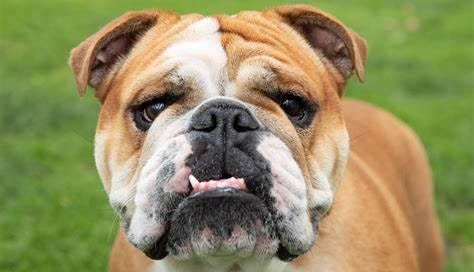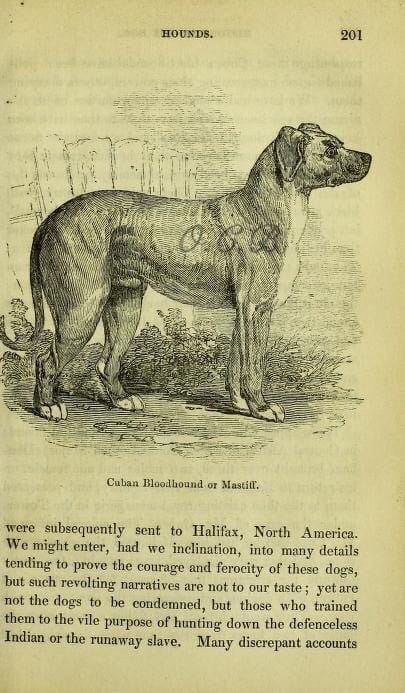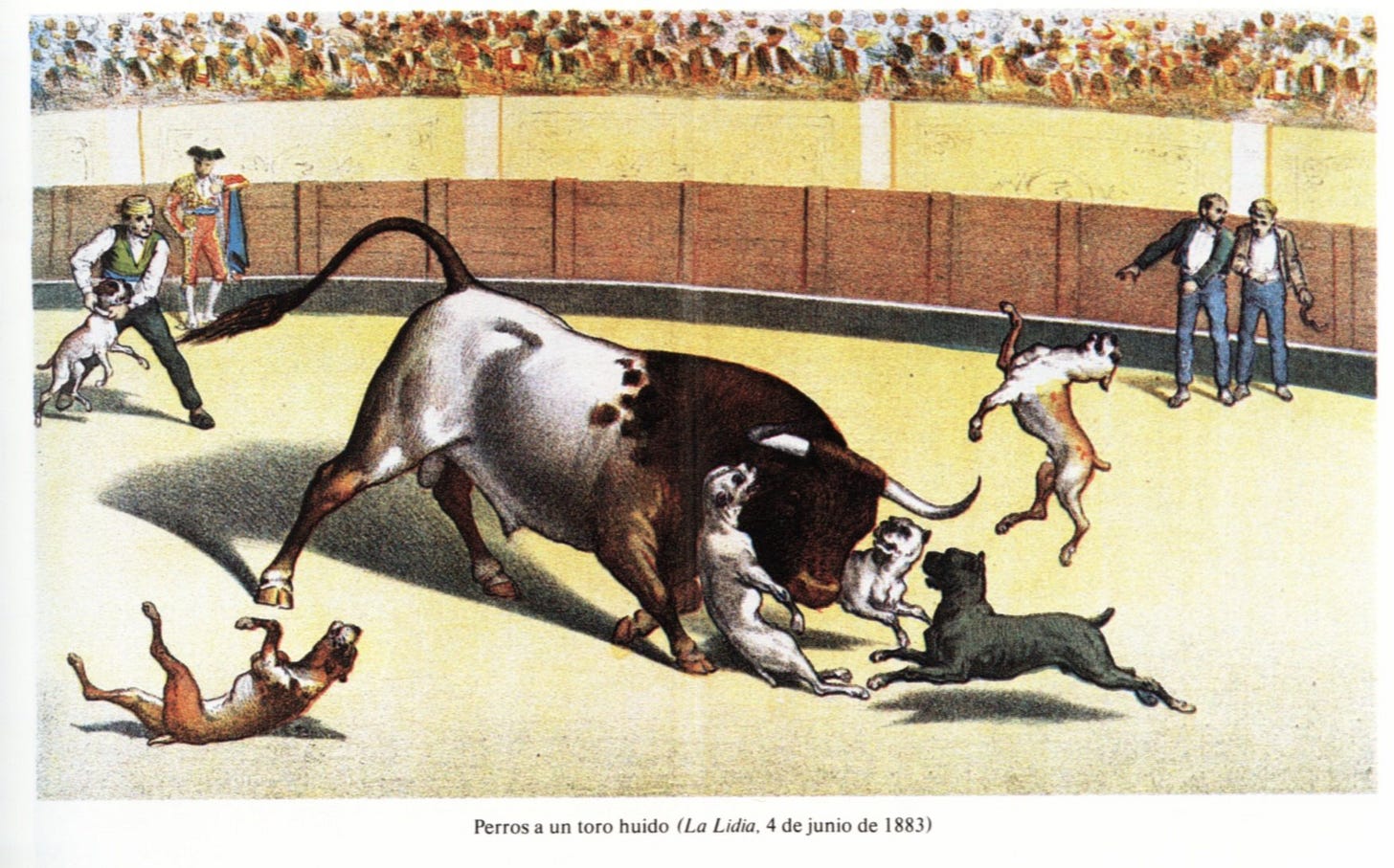The Rough and Tough Fighting Dogs
This is about two dogs who humanity bred to help us with jobs that were so dirty and unethical we wouldn’t even want human beings today to perform them. One dog went extinct while the other was saved.
This article is about two dogs who humanity bred to help us with jobs that were so dirty and unethical we wouldn’t even want human beings today to perform them. These two breeds, the Dogo Cubano and the Old English Bulldog were bred specifically to take a beating for our entertainment in bloodsports and because of their ability to hunt and maul human beings. Once humanity evolved beyond the need for the Dogo Cubano and the Old English Bulldog, they were cast aside. One breed went extinct while the other did not and was bred to be a harmless companion, albeit with health problems which threatens their future. Why did this happen? Why did humanity choose to let one breed die and preserve the other?
Some dog breeds were bred for tasks so vicious that their extinction was a sign that the world was becoming a better place. The Dogo Cubano (a.k.a. Cuban Mastiff, Cuban Dogge, or Cuban Bloodhound) was bred for such tasks. The Dogo Cubano is believed to have been brought to Cuba from England in the mid-16th century where it was bred to be its own particular breed. It is unknown what breed the Dogo Cubano descended from, but it is speculated a Greek and Roman war breed known as the Molossus or the English Mastiff were its ascendant. It’s more likely the Dogo Cubano, like many dogs, was descended from multiple different breeds. The Dogo Cubano was small in comparison to other mastiff breeds standing between 18 to 22 inches (45.72- 55.88 cm) in height. However, it was powerfully built weighing between 90-120 pounds (41-54 kg) with some sources saying that many Dogo Cubanos weighed an astounding 300 pounds (136 kg) which would make them the heaviest dog breed to ever exist. The breed had a thick hide, powerful jaws, and unsurprisingly it had a muscular physique. The color of the Dogo Cubano’s hide varied, but most of them were brown.
The Dogo Cubano was bred to be a fighting machine. It guarded livestock and Dogo Cubanos were revered by their owners for their loyalty and willingness to sacrifice themselves for their owners’ safety. The dog seemed at its happiest when it was engaged in a fight, and it had no fear. However, it was aggressive with other dogs and humans it was unfamiliar with. Dogo Cubanos were also used for dog fighting, which suited its ferocious nature well. It would often fight other dogs to the death. However, Dogo Cubanos were used for even more brutal activities. The Europeans used them as attack dogs when they colonized the Caribbean. Natives were often fed to the dogs while they were still alive. Once Spain had colonized the region, Dogo Cubanos were used to hunt and capture runaway slaves, and their excellent sense of smell aided them in this task. When Dogo Cubanos picked up a scent, they would pursue its source relentlessly. While the dogs were more than capable of severely mauling the runaway slaves, they were trained to pin their victims to the ground and cause them minimal injuries so as not to damage the enslaver’s property. Dogs who helped to recapture the slaves were fed meat as a reward. Runaway slaves knew that evading Dogo Cubanos and other slave hunting dogs was the key to their freedom. The dogs were what they feared most during their attempted escapes. Some slaves rubbed rabbit grease on their feet or waded through muddy water to throw the dogs off their scent. Others armed themselves with knives and other weapons but ran the risk of being severely mauled or killed when they tried to fight the dogs. Dogo Cubanos were also used to torture criminals.
When slavery was outlawed in Cuba, the Dogo Cubano no longer had a purpose. They were cross bred with other breeds and died out by the mid-20th Century. There was no place in a more humane society for the Dogo Cubano, a dog which was bred to be the opposite of humane.
The English Bulldog is one of the most iconic breeds of our culture. Bulldogs are mascots for numerous sports teams at every level of play whether it be little league or the pros. The bulldog mascots are undersized, but determined and tough. Athletes like Pro Football Hall of Famer Bulldog Turner, pro wrestler Bulldog Bob Brown, and Orel Hershiser, the National League Cy Young Award winner for best pitcher in 1988 were all nicknamed bulldog due to their tough reputations. The HMS Bulldog (H91) was a destroyer class ship in the Royal Navy which saw action in the Spanish Civil War and World War II where the Bulldog and her crew acted as a convoy escort during the Battle of the Atlantic. The M41 Walker Bulldog is a light tank developed by the United States which was used for reconnaissance missions in the Vietnam War. The tank earned its nickname partially because despite being undersized, it packed a lot of punch with a 76mm main gun and two machine gun turrets.
English Bulldogs in popular culture are portrayed as the opposite of how they really are in real life. If anyone has ever seen, owned, or knows someone who owns a bulldog, they understand this breed struggles with weight problems, limited mobility, and respiratory problems along with many other ailments which leads them to have unhealthy lives. The bulldog’s folded skin on their faces, the breeds most recognizable feature, also presents health challenges because the inside of the folds are a perfect breeding ground for bacteria if they are not kept clean, which leads to infections like skin fold dermatitis. Despite these health problems, the bulldog’s good nature makes them a favorite pet across age groups and their lack of intelligence means they can only learn basic commands but makes them good companions. The bulldog’s personable and laid-back disposition means they are great with children.
What caused this massive divergence in how bulldogs were perceived and how they are in reality? It turns out these cartoon mascots were tough once upon a time. The first recorded instance of the bulldog breed was in the year 1210. At approximately 15 inches tall (380 mm) and weighing at 45 pounds (20 kg), The Old English Bulldog was bred for a sport called bullbaiting (hence their name) and bearbaiting. The dogs’ job was to fight bulls and bears whose neck or ankle were chained to a pole in an arena of spectators. Before the event, pepper was blown into the bull’s snout to send it into a blind rage. Then a group of dogs would attack the bull by getting down on their stomachs and crawling to the bull as slowly as possible. They would spring into action once close enough to try and pin it down and bite it on the snout or head. The bull would try to fight the dogs off by chasing them and using their horns to fling them in their air or by trampling or goring them to death. The fight would continue until the bull was killed or until they killed most of the dogs. Fights where the bears lost were usually stopped before they could be killed because it was expensive to import them. This is a bizarre example of referee stoppages that are common in boxing and mixed martial arts. Dogs bred for bullbaiting had a hard bite, an aggressive temperament, and displayed no fear when taking on their much larger opponents. They could also endure a great deal of punishment before being killed. Dog fighters recognized immediately that these qualities would make The Old English Bulldog fearsome combatants. However, their lack of agility did not make them entertaining fighters, so they were cross bred with terriers. The Staffordshire Bull Terrier, the American Pit Bull Terrier and the American Staffordshire Terrier were the result of these Old English Bulldog and terrier cross breeding.
Bullbaiting/bearbaiting was one of the most popular spectator sports in England from the 12th to 19th centuries. Even the elites during this era were fond of it. In 1575, Queen Elizabeth I attended an event where up to 13 bears were used. William Shakespeare referenced bearbaiting in Macbeth where the title character compares himself to a chained bear who has no choice but to fight. It’s a reference people in 1606 would have understood immediately akin to a film or tv show mentioning American Football, but something which goes over the heads of audiences today. King James I was also a fan of the sport and hosted private events featuring polar bears and lions. However, concerns about animal cruelty caused these bloodsports to gradually fall out of favor. In 1835, Britain passed the Cruelty to Animals Act which outlawed animal bloodsports like bullbaiting/bearbaiting, dogfighting, and cockfighting.
With the banning of bloodsports and slavery, the Dogo Cubano and Old English Bulldog no longer had a purpose. What use is a fighting dog when it is no longer allowed to fight? The Dogo Cubano was extinct by the mid-20th century and the Old English Bulldog was on the verge of extinction as well in the years after bullbaiting/bearbaiting and dog fighting were banned.
However, the Old English Bulldog had its share of fans, and they worked diligently to not only preserve the breed, but to evolve it into something that was acceptable to the public. The Bulldog Club was founded in England in 1875 for the purpose of breeding out its vicious tendencies and to create a standard recognized breed. Bulldogs who were friendly and showed little to no aggressiveness were used for breeding purposes. Breeders also refused to cross breed the bulldog and began breeding them to accentuate their large faces. In 1877, this kinder gentler bulldog performed at the first Westminster Kennel Club Show. In 1888, an English Bulldog named Robinson Crusoe became the first of the breed to win a championship. In under 45 years the bulldog went from a vicious fighting dog to being nearly extinct to an adorable harmless show dog. Ironically, the only trait breeders have been unable to eradicate from the bulldog is their stubbornness.
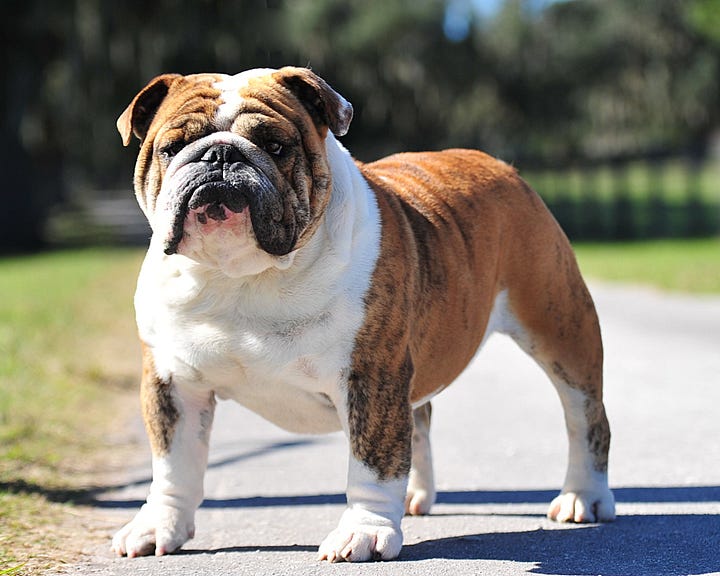
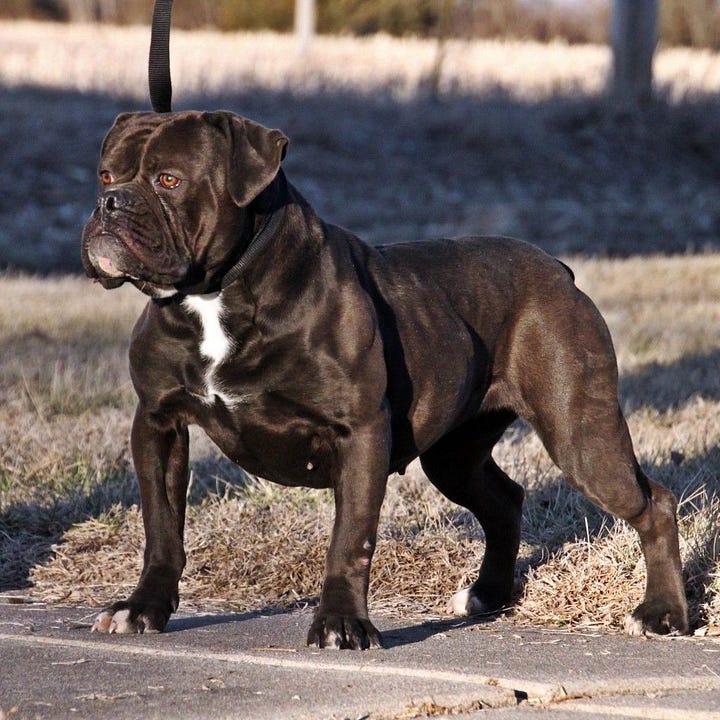
However, the growing severity of health problems English Bulldogs suffer from due to centuries of inbreeding have left the long-term viability of the breed in question. English Bulldogs are in such poor health that even mating and reproducing have become harder. Females have such narrow pelvises that c-sections are the only way for them to birth their litters. Males have such severe breathing problems they struggle to complete intercourse. Scientists from the University of California believe the only way for the English Bulldog to survive healthily while keeping its iconic characteristics is to have it crossbred with a healthier, but similar breed. Scientists suggested the Olde English Bulldogge breed would be the perfect candidate to achieve this. The Olde English Bulldogge was bred in America to have similar traits to the Old English Bulldog without its aggressiveness. In a historical twist of irony, the only way to save the English Bulldog is to bring it back to its roots.
Why was The Old English Bulldog chosen to survive albeit in a more harmless form while the Dogo Cubano was cross bred out of existence? The answer might be as simple as to why there are so many bulldog mascots. For some reason, humanity has a soft spot for the bulldog. They are admired for their tenacity despite their small bodies. Winston Churchill himself was likened to a bulldog not just because of his puffy jowls, but also because he rallied the rest of Britian to hold the line against the Nazis when they were the only ones between a free world, and one ruled by fascism. Humanity likes a never say die attitude in face of great odds and the bulldog embodies this ethos.

